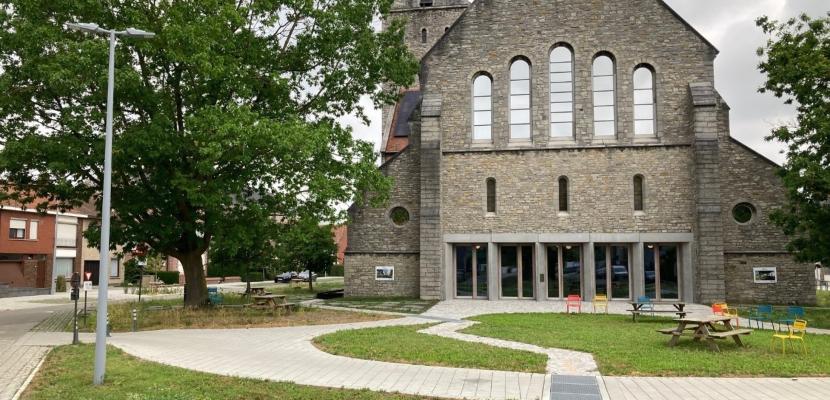
The St. Joseph church area deseals (Sint-Jozef breekt uit)

About this good practice
The project aimed to give more space to green, water, meeting spaces and road safety. The area was almost completely paved where the two center medians in Azalea Avenue were literally and figuratively the only ones to break this pattern with the little greenery present. Streets were characterized by a solid concrete pavement next to a parking strip in coloured concrete clinkers. In addition to the house line there was a raised sidewalk strip. Both lanes of Azalea Avenue each had a double concrete section with a width of over 5m. The aim was to deseal at least 1600 m2.
To reverse the feel of the paved road infrastructure, a design brought in addition to greening and water, explicit place for experience, neighbourhood and mobility. The project was realized in a strong partnership with the neighbourhood within a public, private and collective partnership. Over 2 years, the neighbourhood was able to participate in a participation process. Ideas, wishes and needs were included in the design. The final design resulted in desealing 7000 m2 surface area in a biodiverse planting with numerous flowers, trees and grasses. The existing concrete roadways were narrowed. The parts that were cut out were used as large stepping stones around the church. The green central areas almost doubled in surface area and as such also became interesting as a play area or meeting place while working with permeable paving benefits healthy soil and avoids pressurizing sewers during heavy rainfall.
Resources needed
Approximately 950.000€, of which 250.000€ subsidies by the Flemish government.
Evidence of success
The project was realized in a strong partnership with the neighbourhood. The desealing contributes positively to climate resilience, but also to the overall quality of life of the neighbourhood residents. Instead of the proposed 1600 m2, the final design reached almost 7000 m2 of desealing with a biodiverse planting. The entire project area was converted into a 30-km zone, with opportunities to create a new mobility path and realize a change to a bicycle- and walking-oriented environment.
Potential for learning or transfer
Infrastructural works to the public domain are often implemented top-down. This project has demonstrated that there is an added-value when implementing climate adaptation measures in co-creation with the local stakeholders. By organizing a series of participation sessions, the project did not only increase the support of the stakeholders (residents, private organizations, public organizations) for the planned measures. Through the exchange between city administration and these stakeholders and taking into account their wishes to the extend these were possible, the project was able to implement more thorough climate adaptation measures (from 1600 m2 desealing originally to almost 7000 m2) and at the same time strengthened the neighbourhood.